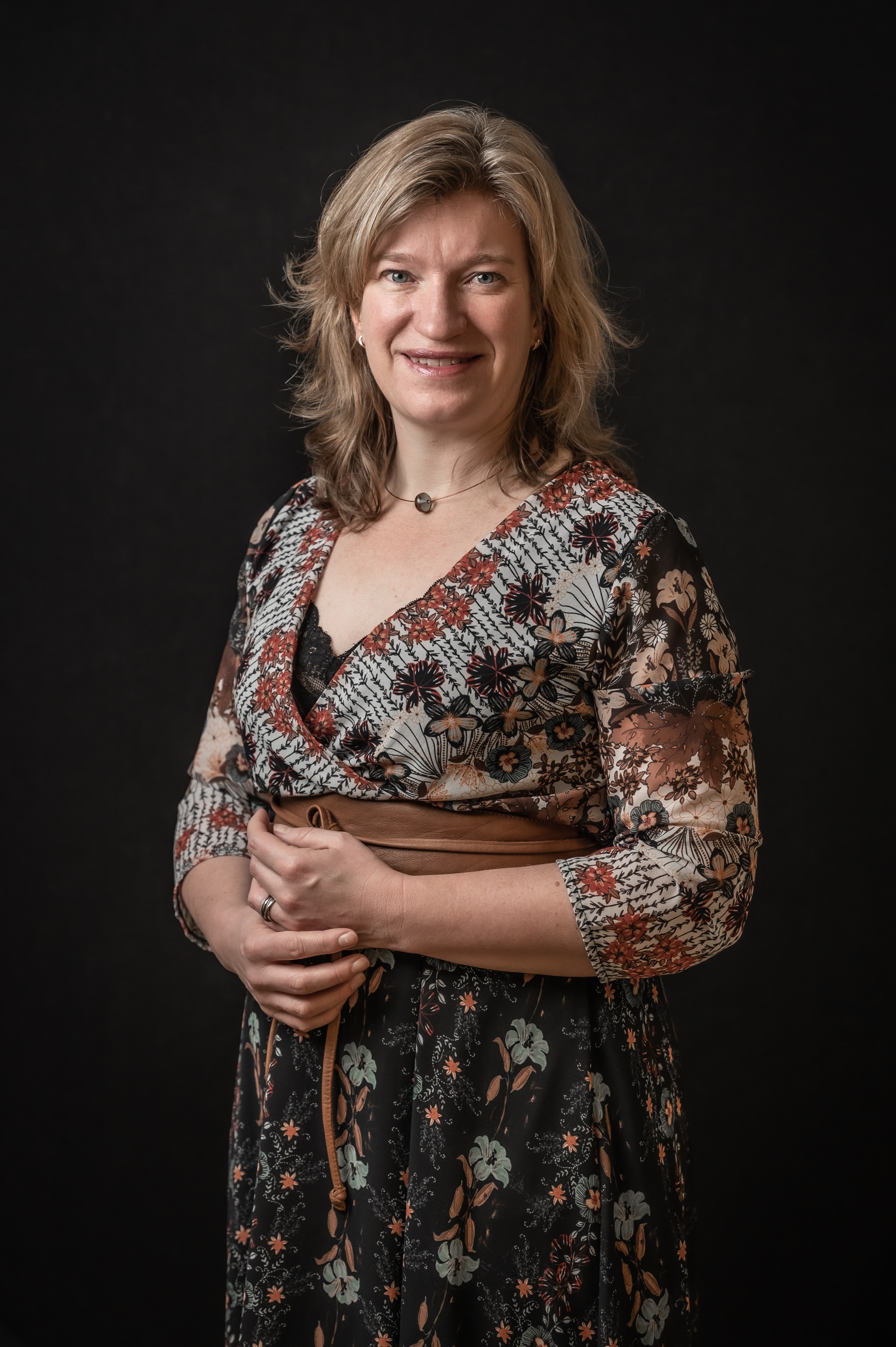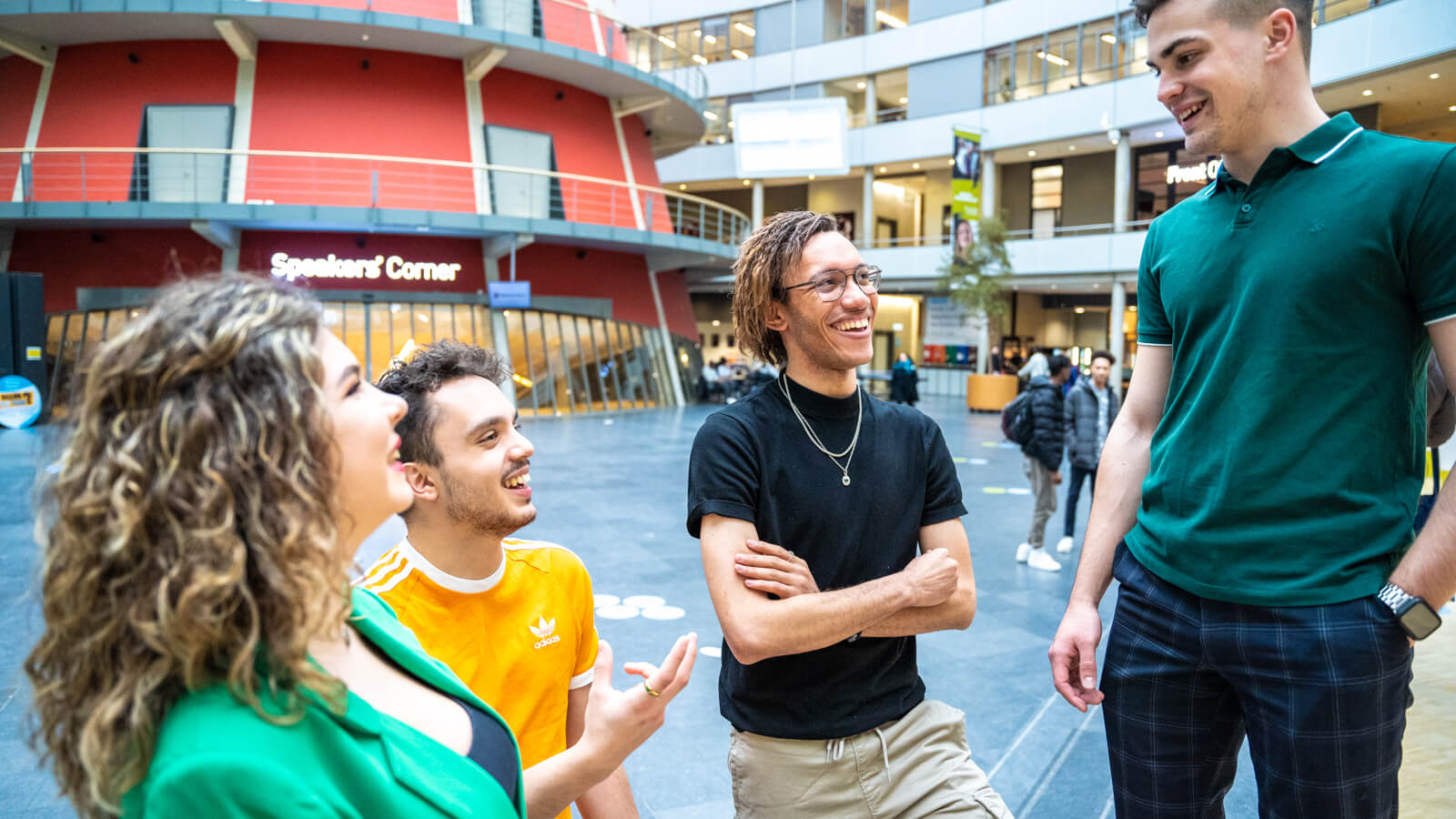Lecturer THUAS appointed as Medical Delta Lecturer
4 December 2023
Many children do not meet the physical activity guidelines and make unhealthy food choices. Sanne de Vries, PhD endeavours to facilitate a healthy start for everyone through her work, recognizing that "Children and...

Many children do not meet the physical activity guidelines and make unhealthy food choices. If this trend does not change, the present generation of children and adolescents will live, on average, five years less than their parents. Sanne de Vries, PhD endeavours to facilitate a healthy start for everyone through her work, recognizing that "Children and adolescents are not capable of resisting all temptations; providing knowledge alone is not sufficient."
Sanne de Vries, PhD holds the position of professor in Healthy Lifestyle in a Supporting Environment and directs the Centre of Expertise Health Innovation at The Hague University of Applied Sciences. Additionally, she works as an Associate Professor at Leiden University Medical Centre, is Living Lab Leader of the Medical Delta Living Lab VIT for Life, and the Leading Professor of the Physical Vitality work package of the SPRONG and Medical Delta program Vital Delta. Recently, De Vries has been appointed as a Medical Delta Professor.
What does the appointment as a Medical Delta Professor mean to you?
"I consider it an honorable appointment for my ambassadorial role as a linking pin between universities of applied sciences, traditional universities, and the professional field. While this bridging function is not new to me, having it recognized and acknowledged in this way is gratifying. Medical Delta was primarily focused on the medical sector and care and cure. I stand more for prevention and vitality, a previously neglected area that gains prominence with this appointment, the Vital Delta program, and the new Medical Delta societies."
Can you briefly describe your expertise?
"I graduated as a Movement Scientist and Epidemiologist and have conducted extensive research on the lifestyle of various target groups, often focusing on youth but also on the elderly and chronically ill. As a professor of 'Healthy Lifestyle in a Supporting Environment' at The Hague University of Applied Sciences, I primarily focus on promoting sufficient physical activity and healthy diet among youth aged 4 to 24 years."
You are one of the first Medical Delta professors having an appointment at a university of applied sciences. What differences do you see between universities and universities of applied sciences?
"The universities of applied sciences are more practice-oriented, applying a diverse range of research methods. There is more co-creation with the target population, such as citizens, and with the intermediate target group, the professionals we often educate at the university of applied sciences. We are accustomed to finding solutions with practice from day one, ensuring that interventions are adopted effectively, and innovations have a genuine impact and can be implemented on a large scale.
Working with multiple disciplines is also easier in universities of applied sciences. The barriers between different departments and programs are lower. The institutes are slightly smaller, and students often receive education across multiple faculties. In my research group, I have technicians, designers, nutritional experts, behavioral scientists, and movement scientists all in one group. This allows us to translate insights into physical activity and diet directly into design and implementation in practice. In a short cycle, we can conduct a usability test within a month, for example. This way, we quickly know if it works or not."
Does the vocational education (mbo) also fit into Medical Delta?
"In recent years, universities of applied sciences have taken an increasingly prominent position within Medical Delta, and I believe that vocational education should also be included. People from vocational education are often more focused on execution and possess extensive knowledge about the practice and the target population, bringing diverse ideas and solutions. Analytical skills or writing proficiency are more prevalent in universities of applied sciences and universities, while those from vocational education excel in organizing, presenting, and getting things done."
To what extent can transdisciplinary collaboration strengthen your research?
"Many innovations falter because practice is not involved from day one. You need knowledge from different disciplines. It may look good on paper or as a model, but it might not fit into daily reality. For instance, if you develop an innovation for physiotherapists and their clients, you must consider the time available for a consultation, how it fits into the administrative system, and whether there is reimbursement. If these aspects are not considered in the design, it will not work in practice. You need knowledge from different disciplines.
We often underestimate the time and skills required to change daily practice. You must consider all aspects and determine whether professionals also think they have a problem or lack skills. We sometimes see that healthcare professionals are unconsciously incompetent. It is challenging to bring about change in such cases. Behavioral change is much more important and challenging than we think."
Can you provide an example where collaboration with practice has worked well?
"For example, we developed a practical motor skills test—the MQ Scan, or in English Athletic Skills Track. Physical Education (PE) teachers were concerned about the deteriorating motor skills of children. That feeling was widely shared, but there was no proof for it. There were tests, but they took 30 minutes per child, which is impractical for a PE class. Together with practitioners, we designed a test that takes one minute per child and can be done with materials readily available in a gym hall.
We designed the motor skills test first, then evaluated the method, and adjusted it based on feedback from PE teachers. We realized, for safety in the track, that we needed more turns to reduce speed. We also noticed that PE teachers often work with three sections in the gym, while we had designed the test straight across the length of the gym hall. We adjusted it based on feedback from PE teachers, and now the test has already been used by more than 200,000 children in the Netherlands and internationally."
The current healthcare system is primarily focused on healing, while you focus more on prevention. How can we move our healthcare system in that direction?
"Adjusting the financing system and focusing on prevention is essential, not only by the government but also by employers. For example, introducing bicycle incentive programs or making meetings a maximum of 45 minutes so that there's an additional 15 minutes to move or eat. Social changes, like making it acceptable to go for a run during working hours, are crucial. If you come to a meeting with wet hair from showering after a run, people still find it a bit strange. During the pandemic, this has changed. I had hoped it would stick more, but back in the office, you quickly fall back to the routine. I struggle with that too. I do not decline a one-hour appointment, but if I schedule something myself, I make it a shorter appointment.
As humans, we need assistance to profoundly change, including changes in laws and regulations. Make healthy choice cheaper and unhealthy choice more expensive. We cannot leave everything to people's individual choices. We, especially children and adolescents, are not capable of resisting all temptations, and providing knowledge alone is not enough. This is particularly true for those with fewer resources, limited choices in their environment, and lower health literacy. The government should do much more to address urgent societal challenges. This is evident in smoking cessation and seatbelt use. For a long time, it was believed that people would adopt these practices on their own, but it only worked with laws and regulations. Free thinking and liberalism are not so favorable in this regard."
What urgent societal challenges in your field need to be addressed quickly?
"One in six children never plays outside. One in three young people skip breakfast, and almost no adolescents eats enough vegetables. If you do not start well as a child, you might not live longer but possibly shorter than your parents. Nowadays, we see much more overweight, hunched backs, and even myopia due to excessive screen time and a high level of inactivity."
How is it to start collaborating with someone from a completely different discipline?
"Working at the borders of my disciplines, for example, with architecture on why children do or don't play outside, is enriching and inspiring. Even in my group of thirty researchers, there are diverse disciplines and personalities, enabling me to switch well between types, research methods, and languages."
What is missing in your collaboration to achieve your goals? What message do you want to convey?
"The people it concerns are not at the table. Instead, there are highly educated people making a living out of it. Classical scientists also struggle with how to start. Going into a neighborhood and having a chat on the street makes some feel extremely uncomfortable. Researchers in my field are comfortable doing that. They also understand that you need to adapt clothing and language to the target population. That is why I find universities of applied sciences so appealing. You can relate to fundamental scientists and the people in the neighborhood. And pass this on to students, the future professionals in the neighborhood.
Furthermore, we should be more aware of implementation. There is a lot of attention to innovations, but if they end up in a drawer, they are useless. Implementation research is a separate discipline that receives too little attention and funding.
Finally, I wish Medical Delta a bit more opposition. Do not surround yourself only with followers or those who think along the same lines but also include unusual suspects, end-users, and contrarians. Organize a citizen panel or client council that can provide solicited and unsolicited advice. Someone who, without too much-specialized knowledge, simply asks logical questions."
You are likely to meet scientists from quite different disciplines and institutions now. Whose work has surprised you, and why?
"Meetings with other scientists make me see my work through different eyes. Years ago, I researched neighborhoods that promote physical activity for the elderly and children. It turned out that dog feces on the street influenced walking in the neighborhood. When I presented that at an American conference, there was laughter. It was a non-issue in America because there are high fines for leaving dog feces. But they also wondered why we had a problem with how much walking there was in the Netherlands. Distances are much larger in America, and walking is much less common. I also researched different types of cycle paths. Abroad they are already happy if there is a cycle path at all."
